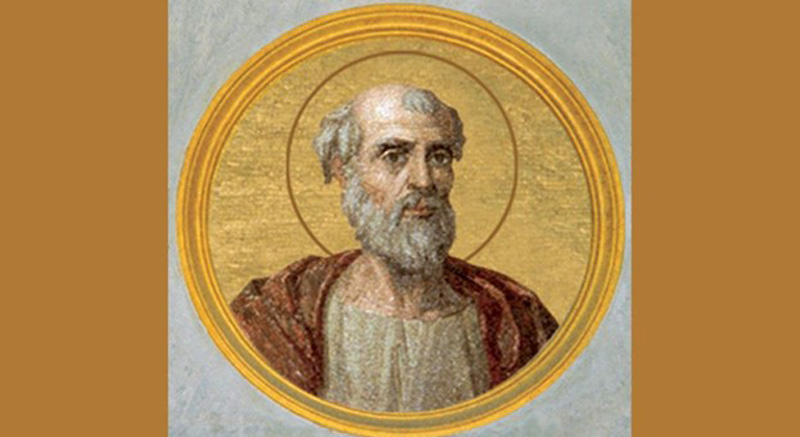(Died 310)
In 304 Marcellus was elected pope, succeeding Pope St. Marcellinus, who had been tortured by the Roman emperor Diocletian.
Marcellus found a church in disarray thanks to hundreds of years of persecution, as well as lapsed and disaffected followers. Three years of relative peace were given the church when Maxentius became emperor in 307, as he was too occupied with other difficulties to persecute the Christians.
After assessing the problems facing the church, St. Marcellus planned a strong program of reorganization. He divided the territorial administration of the Church into 25 districts or parishes, placing a priest over each one, thus restoring an earlier division which the turmoil of the persecutions had disrupted. This arrangement permitted more efficient care in instructing the faithful, in preparing candidates for baptism and penitents for reconciliation. With these measures in force, the Church’s government took on a definite form.
He established new catacombs and saw to it that the divine mysteries were continually celebrated there. Marcellus’ biggest problem was dealing with the Christians who had apostatized during the persecution, many of whom wanted to reconcile with the church without performing the necessary penances.
Christians who had remained faithful demanded that the customary penitential discipline be maintained and enforced. Marcellus approached this problem with uncompromising justice; the apostates were in the wrong, and regardless of the consequences, were obliged to do penance. It was not long before the discord between the faithful and the apostates led to violence in the streets of Rome.
The emperor Maxentius judged the pope responsible for the trouble between the Christian factions and condemned him to work as a slave on the public highway. After nine months of this hard labor, he was rescued by the clergy and taken to the home of a widow named Lucina. She welcomed him with due respect and offered him her home for a church.
When the emperor learned that Christian rites were being celebrated there, he profaned the church by turning it into a stable and forced the Holy Father to care for the animals quartered there. In these sad surroundings, Marcellus died on Jan. 16, 310. He was buried in the catacombs of Priscilla, but later his remains were placed beneath the altar of the church in Rome which still bears his name.
Adapted by A. J. Valentini from: Magnificat, E. (n.d.). St. Marcellus, Pope and martyr. Sanctoral.Com. Retrieved Jan. 6, 2021, from https://sanctoral.com/en/saints/saint_marcellus.html
